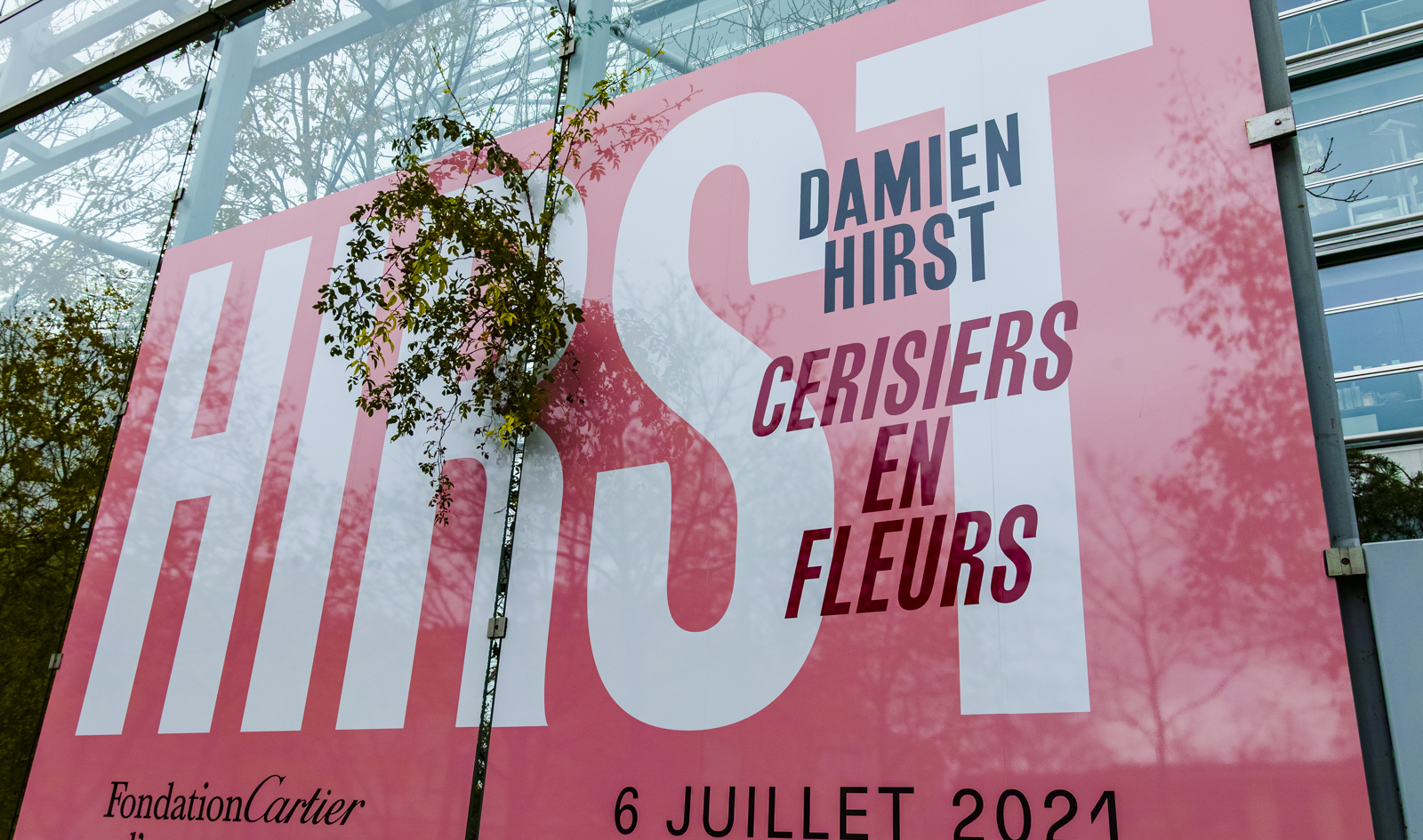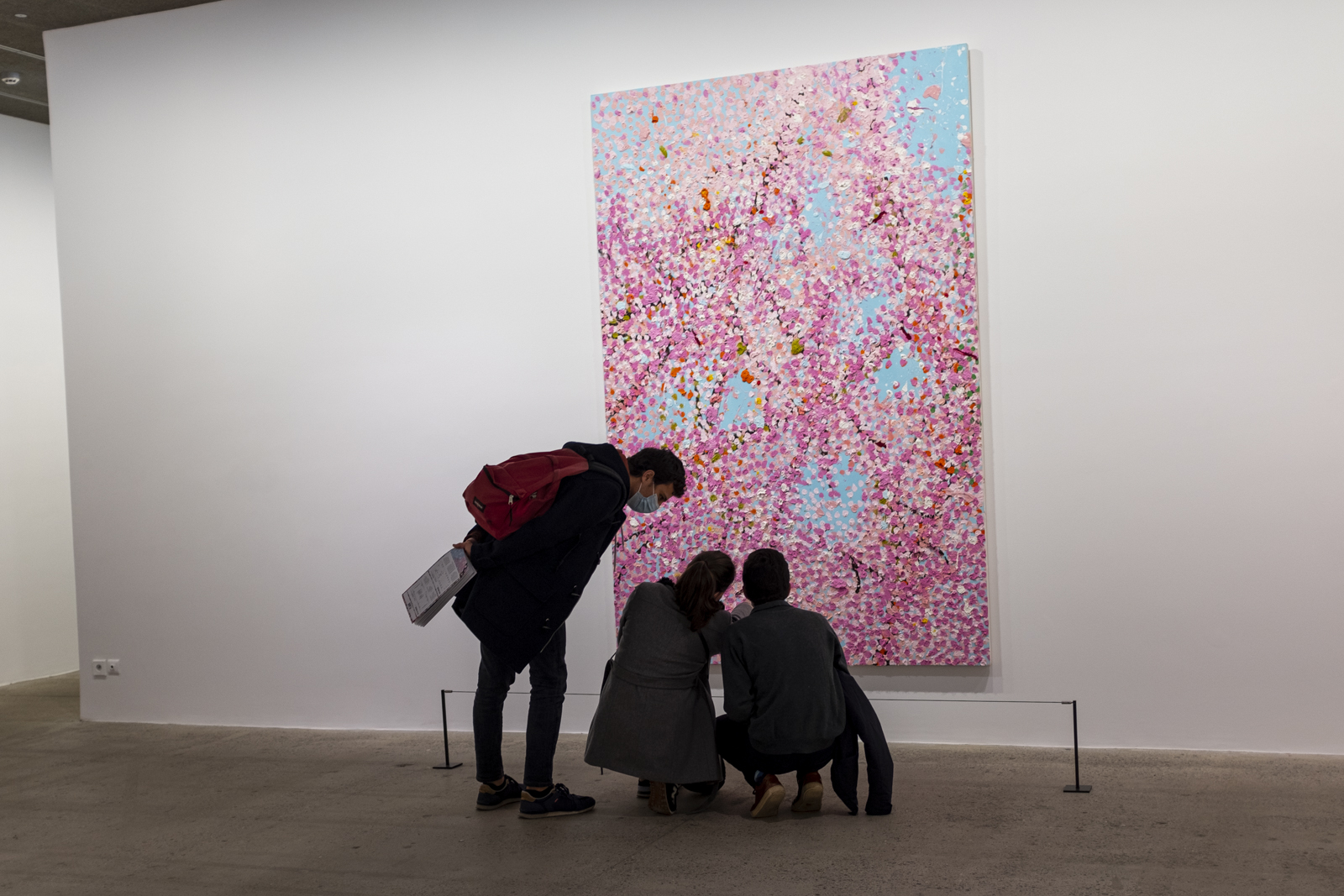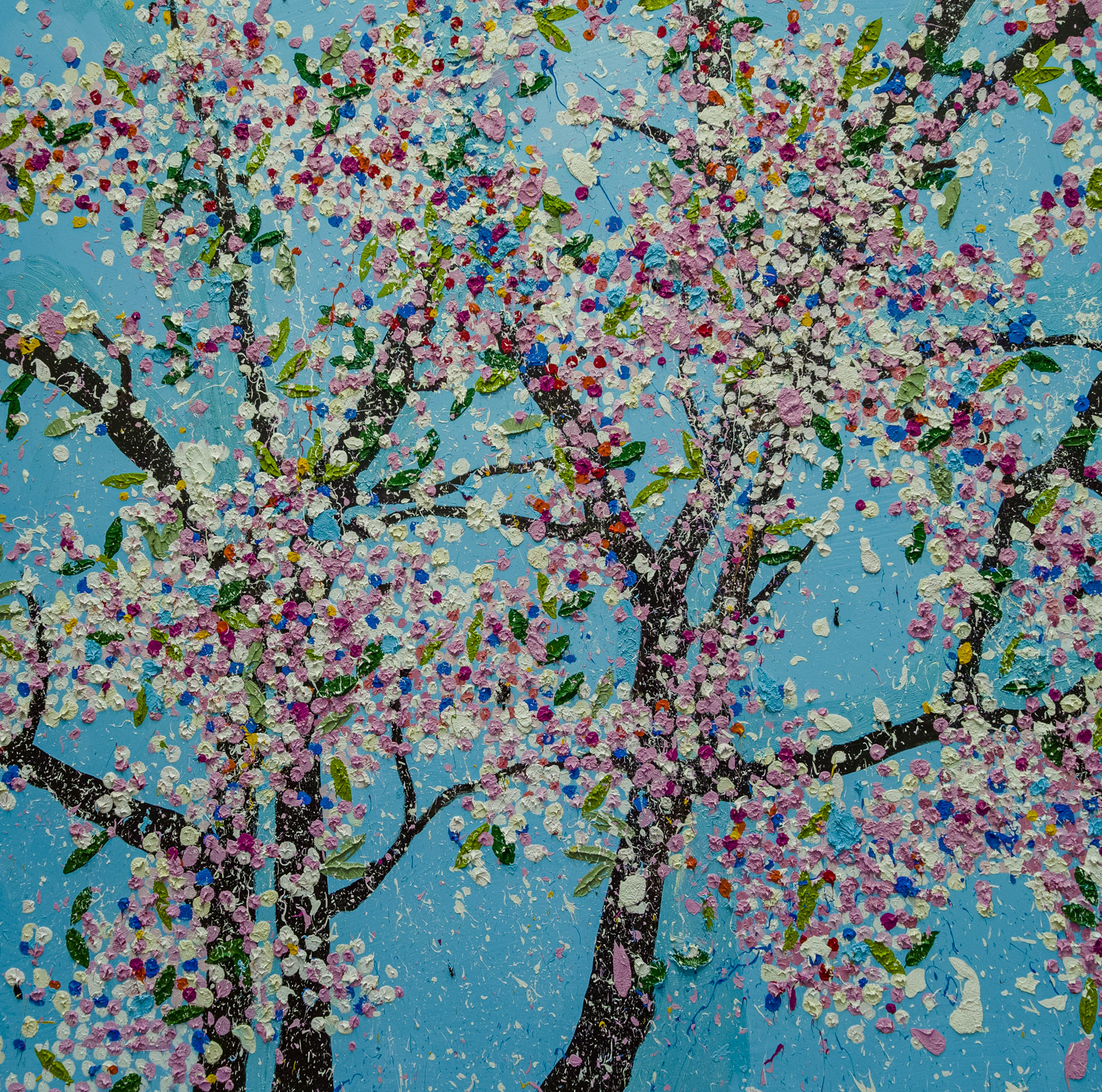TOC
In art history manuals it is often written how great artists have almost a sixth sense in interpreting and understanding the era in which they live better than all the others around them. There is a German term -Zeitgeist- which precisely means “spirit of the time” and knowing how to grasp it would be a supreme sign of the artist’s skill. If we were to find the spirit of our time, the things that best represent it, we could easily list the pandemic, the distance, the metaverse, the network, and the crisis. Many more or less famous artists already do it and with considerable results. Let’s take a pop-cultural phenomenon like Banksy. His street art transforms the walls into an apparent mirror of the dystopian society in which we live, according to many. Up to here, we can say that the speech is “easy”, but correct. But what happens when we subvert this recipe?
Let’s imagine that someone wants to identify the last 2 years as a joyful and carefree time, full of colors and with a friendly nature that surrounds us. None of us would describe the experience of the pandemic and everything that followed. Damien Hirst, on the other hand, in this exhibition at the Fondation Cartier in Paris, does just that: he bombards us with 30 canvases of cherry trees in bloom. The canvases themselves are beautiful, with bright colors, dense and material brushstrokes, more like Pollock than pointillism. Unlike action painting, however, these paintings are deeply figurative and unexpectedly joyful. After all, the title itself, “Cherry Blossoms”, can only evoke happy things. Of course, there is also the issue of death and withering but always faced with a delicacy that I would dare to call classic. They are paintings that we could define as lighthearted, but of that lightheartedness which one arrives at either from very young or very old.

The cherry trees are unambiguously figurative, in an almost provocative way
It is immediately clear that our age is not a carefree moment. Indeed, it is the opposite, with the pandemic that has engulfed everyone with anxieties and doubts. So how can an artist in 2021 literally surround us with flowers? I think this is his answer to the very time we live in. Instead of painting sad things, Hirst did what many of us did during the pandemic: decorate our homes, grow a plant, make our world a little more comfortable. Before attending the exhibition I was curious if it would give me the sense of a golden prison. This tendency to want to decorate one’s own small space can sometimes lead to this indeed. However, you never breathe this air, on the contrary: the canvases are so airy that they do not enclose us in space but open it up again.
It is also interesting to see the reaction of people to the paintings. Many photograph them because it is now natural: when we see something beautiful we want to share it. Hirst showed great courage in doing this: having created something unmistakably beautiful in contemporary art. The beauty is then probably contagious and this is reflected in the mood of the visitors: far from the frenetic pace of the great museums, you could breathe more the air of a Sunday trip than of an art exhibition. After all, beauty and lightheartedness are perhaps the things that we have missed most in the evenings alone in front of the computer and so why not make a feast?
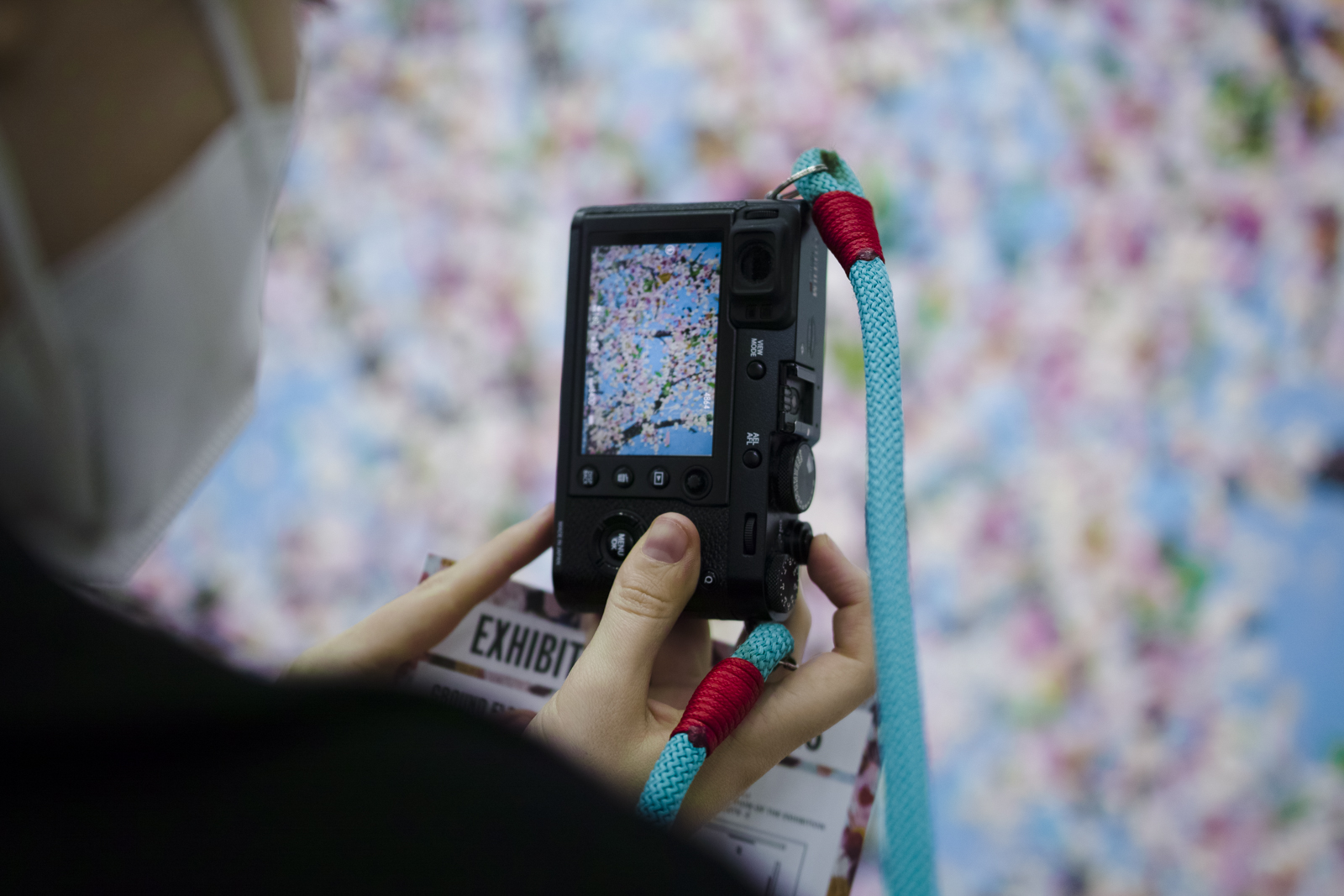
It is impossible to escape the instinct of taking a picture to the flowers!
However, the starting point remains: beyond a “consumer” art, which makes us feel good now, will there be something left? When we will think of 2021 in the art will we think of cherry trees in bloom? The obvious answer seems to be no: it is a reality too distant from what we live in this moment to take root in our imagination. It is no coincidence that at this moment it is street art or political artists who have a new voice and following, at times when society and debate are so polarized. I find both of these genres quite boring. While it’s impossible to deny their artistic value, I wonder: haven’t we seen enough of this? Our eyes are flooded with tragic images, inequalities, surveillance, and metaverses. I don’t want to say that everything is fine as it is and it makes no sense to change it, but I think this bombardment leads more to addiction and apathy than to change.
However, this is not the first era in which art expresses something different from the popular sentiment of the moment. Let’s think about the birth of impressionism: between Manet’s breakfast on the grass and Impression, Monet’s Sunrise there are in just 7 years the Franco-Prussian war, the defeat of Sedan, the fall of Napoleon III, the suppression in the blood of the Commune and the difficult birth of the new republic. But seen through the paintings, that era is for us full of colors, compositional freedom, and new horizons that open up.
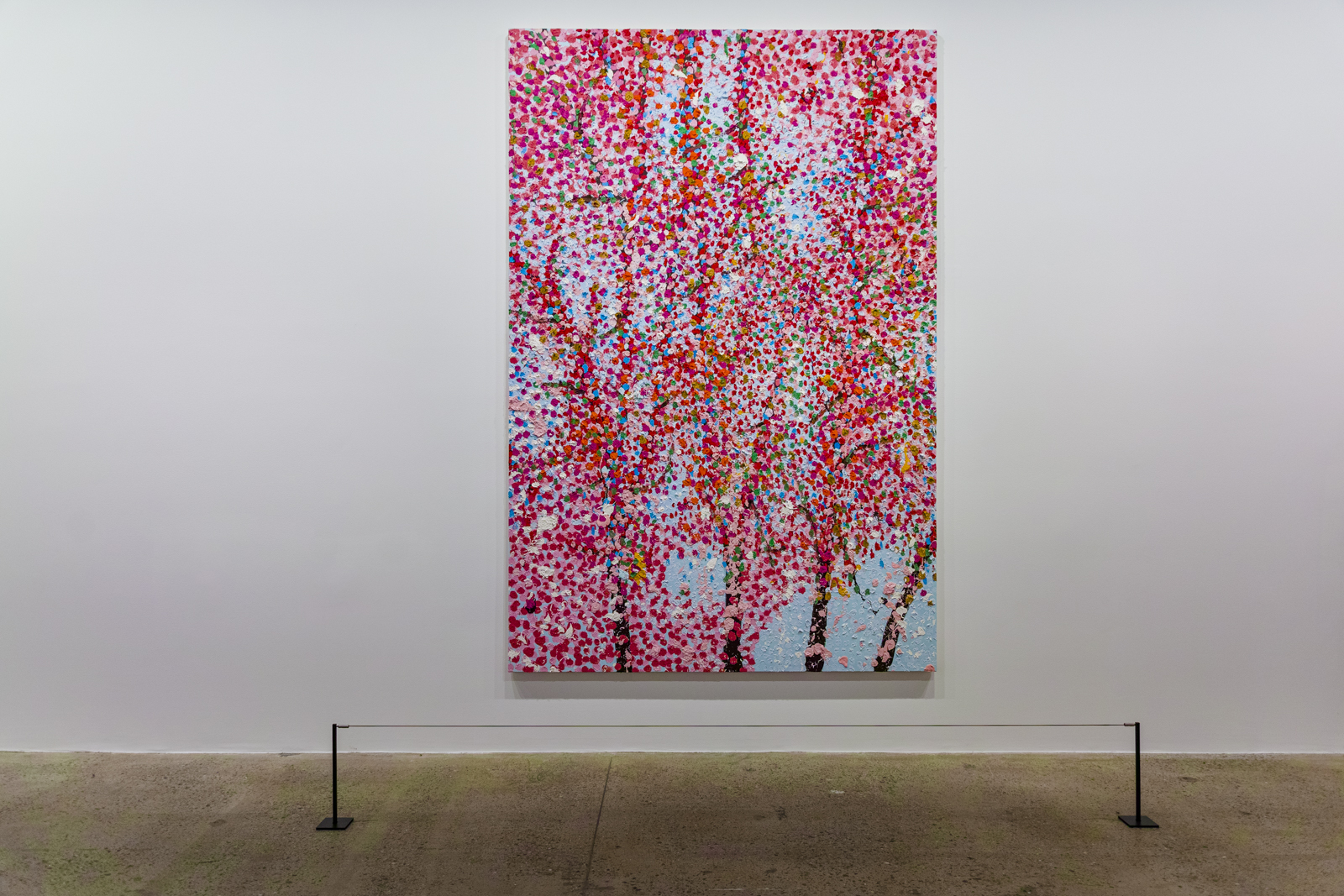
Was Hirst in the same mission to make us think of 2021 as a year of flowering instead of sadness? We can’t know. Time will bring us the answer in a few years. Personally, however, I think it has possibilities, for several reasons. First, these canvases are part of a larger work that will be dispersed among museums and collections in the coming years. I predict that many of them will arrive in distant and growing countries, which will feel the message of flowering particularly appropriate. Moreover, I think it will be important for us too to take ourselves a little less seriously after these complicated years and to give ourselves a little beauty. Not because we deserved it, but because, much more simply, it is there within our reach, just outside the window.
